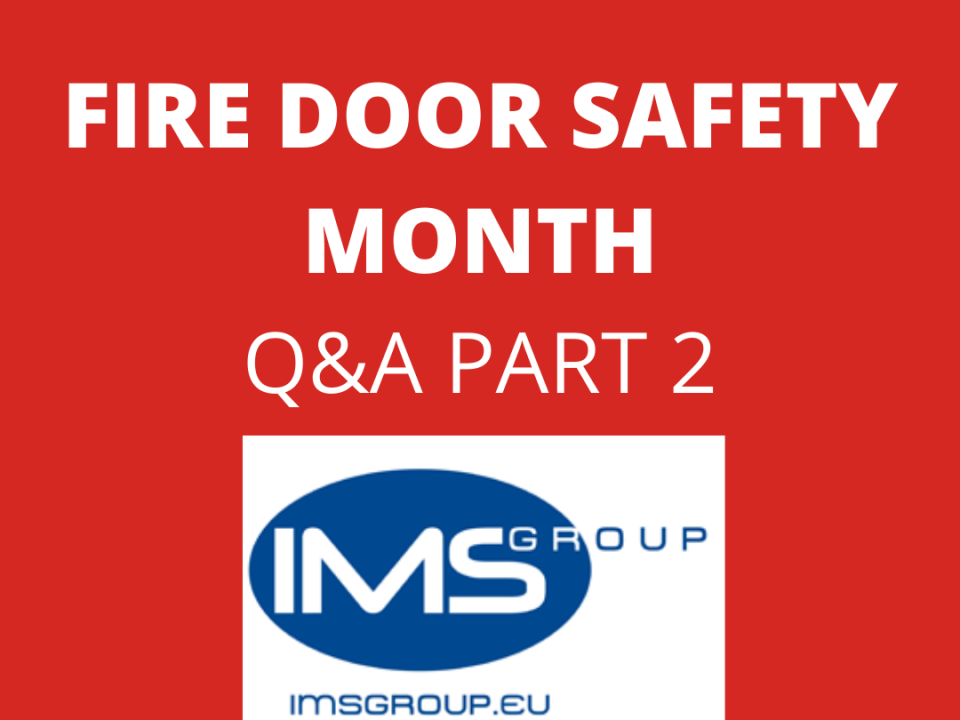The purpose of this post is to discuss what we do and why we are different?
Not the new kids on the block
Firstly, we are not one of the new kids on the block, we have just entered our twelfth year within the passive fire industry. Unlike the 1000% increase in fire safety professionals entering the industry since the tragic night of Grenfell, we have not jumped on the band wagon, we were already driving it from the front.
Skillset in our industry has diminished
The unfortunate thing about the increase in fire professionals is such an increase has led to the diluting of skillsets within the industry, this is an unfortunate fact. It doesn’t help that our industry is still so unregulated.
What is the actual value of Third Party Accreditation
Did you know that out of all the Third Party Accreditations there is only one that offers a UKAS accredited fire door survey. That is Bluesky certification, yes that is right none of the others offer accreditation for inspections. Bluesky are UKAS accredited for installations and maintenance, but they are the ONLY one that offers accreditation for surveys/ inspections. Therefore, we as a company decided to go down the route of multiple third-party accreditations. We hold Firas, FDIS Fire Door Inspection Scheme and Bluesky Certification. It means that we as a company receive at least three times the audits on our works and reports.
Forget Compliance
“What” I hear you shout, this is my singular point of view, and I will explain why I say this and why I stand by it, anyone that has ever questioned me on this has always agreed with me at the end of our conversation. Let’s start with what is compliance “Generally, compliance means adhering to a rule, such as a policy, standard, specification, or law. Regulatory compliance defines the goals companies want to achieve to ensure that they understand and take the necessary steps to comply with policies, relevant laws, and regulations”.
Guess what? Forget compliance is a wonderful thing for sure but it is the unicorn.
A unicorn, you can see but only at the beginning, it then disappears like the mystical creature it is. What do I mean by this? During the construction of a building, compliance is the goal and should be a must, this isn’t always the case mind you, which is a shame. Even if the mystical unicorn is caught and caged in the wonderful construction being 100% compliant. It can only stay there whilst the building isn’t live(pre-opening). As soon as the building becomes live, the doors swing open people come in and interfere with the building, releasing the beautiful unicorn back to the magical land from which it came. A live building is constantly changing just by its standard use. A door is opened and closed continually. Buildings are constantly evolving and changing be that maintenance works, additions, repairs or replacement even vandalism.

This is why Regulatory Reform (Fire Safety) Order 2005 (RRO) was introduced. It removed the fire Certificate from the Fire Brigade, that certificate was used like a rubber stamp that everything WAS okay on THAT GIVEN DAY and is therefore still OKAY. We knew then that things needed to be constantly monitored and checked to reduce the risk, not eliminate. To eliminate, we would need to remove all risks, such as people and shut the building down. We might get the chance to recapture the unicorn again if we did, but we would have buildings not being used. The RRO introduced the Responsible and Competent persons. It didn’t go far enough and hopefully the new fire safety bill will take it a step further. You will also hear phrases such as the golden thread being used now. This is something we have been gathering for our clients for the entire time we have been in the passive fire industry. We used to just call it the audit trail. You should have a history of your fire doors, such as:
Who made them,
Do they have labels and plugs from the manufacturer so test documentation can be collated.
When was the last time they were inspected,
Was the inspector competent, what method of inspection was used?
When was the last time they had works completed to them and what works was it and by whom?
It really is that simple. You can ask one simple question at the beginning to determine if you are compliant. “how many fire doors do I have in the building?” If you can’t answer that how can provide evidence of any of the above?
We need to monitor our risks and document them as we would with any risk assessment, we are always trying to reduce the risks and this is how we should treat Passive Fire Protection. Continually monitoring and understanding of risks.
This article was written by our Technical Director Aaron Gadd
He has vast experience within this industry and by some is counted as a bit of a expert, he does have a very unique personality and speaks how he sees it. But as Always let allow Aaron to have the Last word
I’ve never been the one for the limelight. Unless there is a debate, and then I can’t seem to control myself. I decided to start writing this blog as certain people around me keep telling me to do it. I am known as the “The angry fire door man”.
I love my industry but also hate it as well. We have held ourselves back in this industry, we have always been so secretive about our knowledge and our egos have got in the way (This is why I will not be listing the letters after my name on this blog). This has led the fire industry especially passive fire protection to be at its worst state since all the years I have worked in it. Sorry to my esteemed peers if you don’t agree with me, that like most things is open to opinion.
It is okay not to know something, you just need to know where or how to find the answer

Technical Director Aaron Gadd





